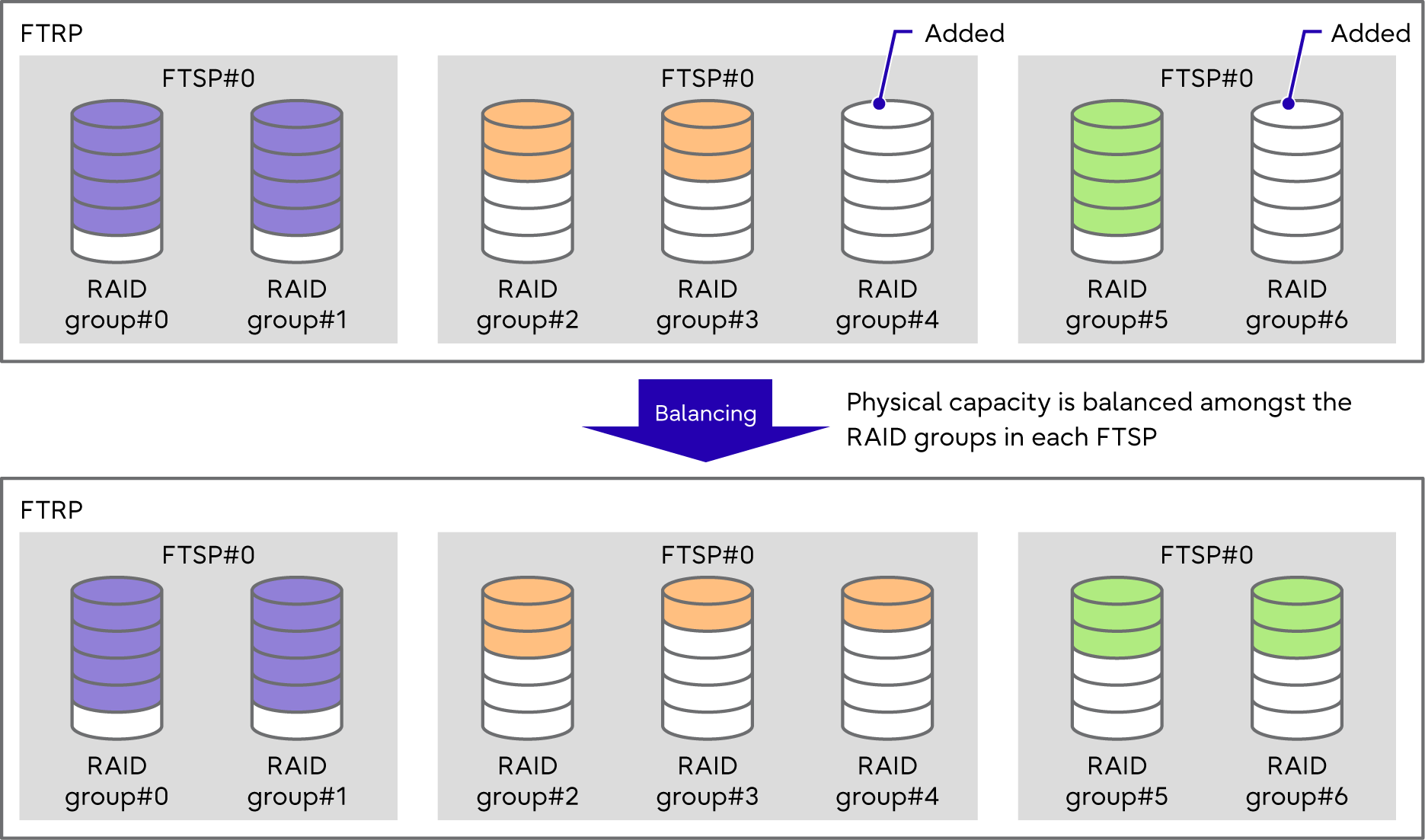FTRP Balancing
When drives are added to a pool, the physical capacity may be allocated unevenly among the RAID groups in the pool. By using the Flexible Tier Pool balancing function, the allocated physical capacity as well as the usage rate of the physical disks in the pool can be balanced. Balancing can be performed by selecting the FTRP to be balanced in ETERNUS Web GUI and ETERNUS CLI.

FTRP balancing is a function that evenly relocates the physically allocated capacity of FTVs amongst the RAID groups that configure the FTSP.
Allocation of FTSPs is determined based on a performance analysis by Automated Storage Tiering function of ETERNUS SF. This plays an important role for performance. The FTRP balancing function can be used to evenly relocate the physically allocated capacity among RAID groups that configure the same FTSP. Note that balancing cannot be performed if balancing migrates each physical area to other FTSPs.
Balancing Level
"High", "Middle", or "Low" is displayed for the balance level of each FTSP.
"High" indicates that the physical capacity is allocated evenly in the RAID groups registered in the FTSP. "Low" indicates that the physical capacity is allocated unequally to a specific RAID group in the FTSP.
FTRP balancing may not be available when other functions are being used in the ETERNUS DX or the target volume.
Refer to Combinations of Functions That Are Available for Simultaneous Executions for details on the functions that can be executed simultaneously, the number of simultaneous executions, and the capacity that can be processed concurrently.
If the free capacity in the FTSP becomes insufficient while FTRP balancing is being performed, an error occurs and the balancing session ends abnormally. Note that insufficient physical capacity cannot be replaced by other FTSPs.
When FTRP balancing is performed, an area for the work volume (the destination FTV which has the same capacity as the source FTV) is secured in the FTRP to which the FTV belongs. As a result, the status of the FTRP may temporarily become alarm status (the FTRP usage exceeds the "Caution" or "Warning" threshold). This alarm state is removed once balancing is completed successfully.
If the capacity of the FTRP is expanded during an FTRP balancing process, the balancing level might be less than before.
FTRP balancing may not be performed regardless of what FTRP balancing level is used. FTRP balancing availability depends on the physical allocation status of FTVs.



